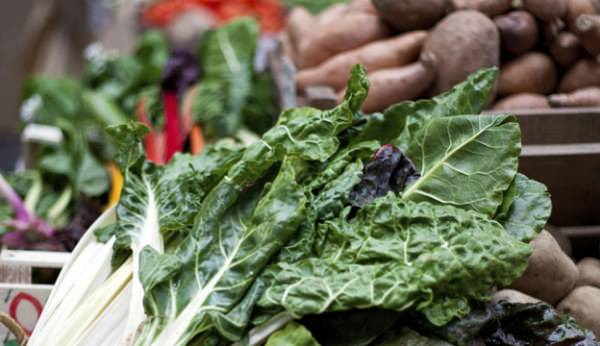
The beginning market gardener learns quickly that there is a great distance—no matter how large or small the physical distance may be—between the garden and the customer. A beautiful head of broccoli in the field, for example, does not necessarily equal a beautiful head of broccoli on the table—you need to take a lot of care during harvesting to ensure its quality remains intact. Use these tools and tips to ensure your produce gets from field to fork as safe, fresh and flavorful as it was when it was picked.
1. CoolBot
Quickly cooling down produce is often the key to its longevity. Because most beginning farmers don’t have luxuries like walk-in coolers to cool veggies rapidly, Eric Wooldridge from Bells Bend Farm in Nashville, recommends a handy device called the CoolBot, which turns a regular air conditioner into a powerful and adjustable cooling device, helping you to transform any small room into a temporary cooler.
2. Plastic Tubs
If you work on a small scale and transforming a room into a walk-in cooler isn’t feasible, you can hydro-cool your produce in large plastic tubs to preserve their freshness. Hydro-cooling is the act of dunking produce in cool, clean water to cool it down. Be sure to change the water and clean the tub between vegetable types to avoid possible cross-contamination.
3. Spray Bottle
Wind, heat and sun can all have disastrous effects on the state of your vegetables, and wilted veggies can have disastrous effects on the state of your market sales. Mist leafy greens and other produce that wilts as often as needed from harvest through the market day to keep them cool, hydrated and looking fresh.
Buy a nice spray bottle, preferably from your local garden store, where they may have one for exactly this purpose. Make sure it can produce a light mist, as shooting a concentrated stream of water at your veggies could inadvertently damage them. On our farm, we often mist a bin of vegetables and cover with a clean, damp sheet to keep the veggies shaded, out of the wind and moist.
4. Harvest Bins
When purchasing harvest bins, look for bins or baskets specifically designed for harvesting that fit together, stack easily and protect the food. Also, consider what you’re growing: Tomatoes, for example, shouldn’t be stacked in a bin more than a couple layers high for fear of bruising. Think about collecting several shallow bins for more fragile vegetables and several deeper bins for lighter produce, like greens. Pavel Ovechkin of Pavel’s Garden in Oldham County, Ky., recommends using a variety of plastic totes with interlocking lids in lieu of the wax produce boxes for easy stacking, longevity, cleanliness and to keep vegetables cool.
5. Market Vehicle
Nearly every professional farmer has a vehicle to transport vegetables to market. Trucks with 8-by-4-foot beds and camper tops can be nice, as they double as farm vehicles. Although it is essential to have the camper top in order to keep the wind off your veggies, packing under the camper top can be notably stressful on the back and force you into tight situations. Vans have the advantage of inside air-conditioning—which can make all the difference on a hot day and a long drive—plus side doors, which turn loading and unloading into a more efficient task. For smaller gardens, a station wagon or small trailer could be a nice alternative to buying a larger truck or van. No matter what you use, park it in the shade before and after harvesting.
6. Individual Packaging
Plastic produce bags, about 1 gallon in size, aren’t a necessity but can be very handy in keeping vegetables fresh. Plastic retains moisture and keeps the wind off greens and other leafy produce. There are even biodegradable produce bags available, but it may take some searching to find a good price and product. However, if you are able to keep your greens cool, misted and out of the wind, you can simply use biodegradable twine or rubber bands to individually wrap your produce and maintain sustainability.
Post-Harvest Storage Tips
In order to keep your produce in top condition until market day, there are a few other best practices to follow. Certain fruits, such as pears, apples and plums, produce ethylene gas which can damage other crops. Store these items separately, and always consider how a fruit or vegetable might affect another. This article on root-cellar storage will provide you with some helpful tips.
Prepare a space for storage before you harvest: a cool, dark, dry cellar for potatoes; a warm, dark place away from other produce for onions; a warm, dark place for curing sweet potatoes, et cetera.
And lastly, when handling vegetables for long or short storage, maintain sanitary habits, wash hands often, clean produce bins after every use, and never process or clean vegetables where you handle meat or animals.




